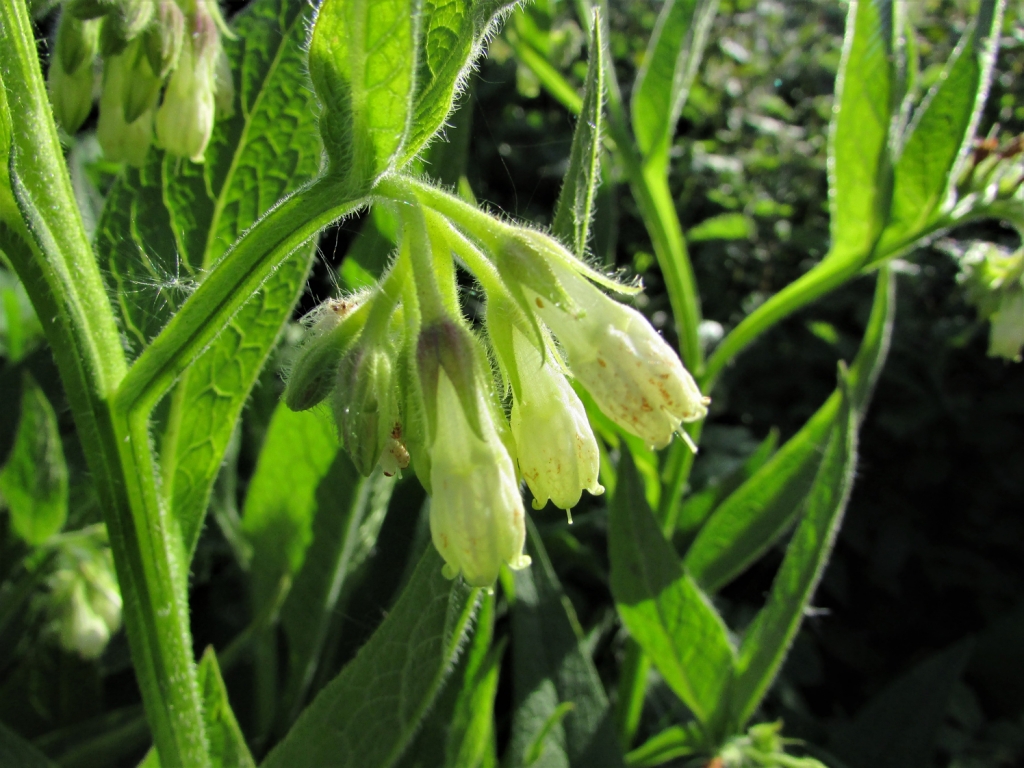

The research tested the potential of participatory workshops as a dissemination activity or new way of transferring knowledge in ethnoveterinary medicine. These figures are important because sustainable agriculture has been defined (by the Federal-Provincial Agriculture Committee on Environmental Sustainability) as that which is economically viable for the present generation of farmers and environmentally sustainable for the future generation. Twenty percent of these organic farmers had over $50,000 in gross sales. In 2003 there were 420 certified organic farmers 51% of which had less than $10,000 in gross sales. Only 13% of farmers report receipts of over $25,000. The return to assets on these farms ranges from -1% for farmers with sales of $19,000 to $25,000 to 5.2% from farms with sales of over $250,000. It was reported that 7,460 farmers in British Columbia with annual sales of over $10,000 have a low net farm income.
#Symphytum officinale for cavities full#
The average wage for farmers working full time in agriculture in the Capital Region of Vancouver Island was $14,000 however 53% of all farms have receipts of less than $5000. Only 1.5% of the population of British Columbia lives on a farm. There are an additional 77 farms in transition to certified organic production. The research area of British Columbia had 383 organic farms in 2004, a decline of 1.5% since 2001, on approximately 25,000 acres. Research into ethnoveterinary medicine is often undertaken as part of a community-based approach that serves to improve animal health and provide basic veterinary services in rural areas. Ethnoveterinary medicine is the scientific term for traditional animal health care. As scientists we evaluated technology already developed by farmers or community members. Our research co-operatively documented and validated (in a non-experimental way) the ethnoveterinary medicines used by livestock farmers in British Columbia. Anxiety and pain are well treated with Melissa officinalis and Nepeta caesarea. Treatments with high validity against endoparasites included those with Juniperus communis and Pinus ponderosa. Plants with high validity for wounds and injuries included Hypericum perforatum, Malva parviflora and Prunella vulgaris. Some of the plants showing high levels of validity were Hedera helix for retained placenta and Euphrasia officinalis for eye problems. Hedera helix and Alchemilla vulgaris are fed for retained placenta. Ketosis is treated with Gaultheria shallon, Vaccinium sp., and Symphytum officinale. Taraxacum officinale, Zea mays, and Symphytum officinale are used for udder edema. Anethum graveolens and Rubus sp., are given for increased milk production. Mastitis is treated with Achillea millefolium, Arctium lappa, Salix alba, Teucrium scorodonia and Galium aparine. The following plants are used for diarrhea and scours: Plantago major, Calendula officinalis, Urtica dioica, Symphytum officinale, Pinus ponderosa, Potentilla pacifica, Althaea officinalis, Anethum graveolens, Salix alba and Ulmus fulva. Syzygium aromaticum and Pseudotsuga menziesii are used for coccidiosis. Wounds and injuries are treated with Bovista spp., Usnea longissima, Calendula officinalis, Arnica sp., Malva sp., Prunella vulgaris, Echinacea purpurea, Berberis aquifolium/ Mahonia aquifolium, Achillea millefolium, Capsella bursa- pastoris, Hypericum perforatum, Lavandula officinalis, Symphytum officinale and Curcuma longa. Euphrasia officinalis and Matricaria chamomilla are used for eye problems. Curcuma longa L., Salix scouleriana and Salix lucida are used for caprine arthritis and caprine arthritis encephalitis. The following plants are used for abscesses: Berberis aquifolium/ Mahonia aquifolium Echinacea purpurea, Symphytum officinale, Bovista pila, Bovista plumbea, Achillea millefolium and Usnea longissima. There are 128 plants used for ruminant health and diets, representing several plant families.
#Symphytum officinale for cavities manual#
A draft manual prepared from the data was then evaluated by participants at a participatory workshop.

Medicinal plants are used to treat a range of conditions. In 2003 we conducted semi-structured interviews with 60 participants obtained using a purposive sample. The use of medicinal plants is an option for livestock farmers who are not allowed to use allopathic drugs under certified organic programs or cannot afford to use allopathic drugs for minor health problems of livestock.


 0 kommentar(er)
0 kommentar(er)
